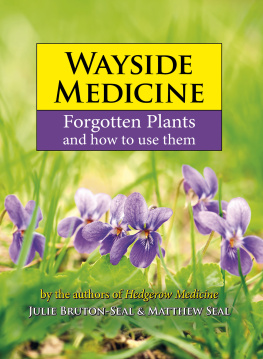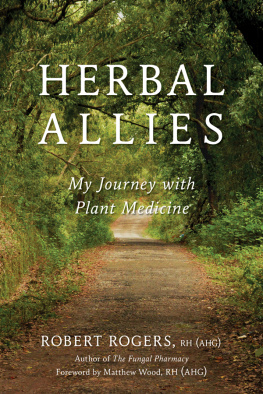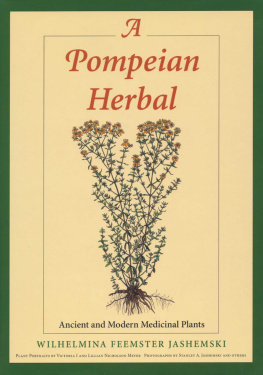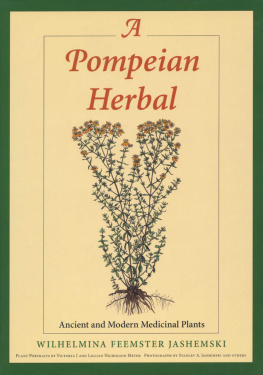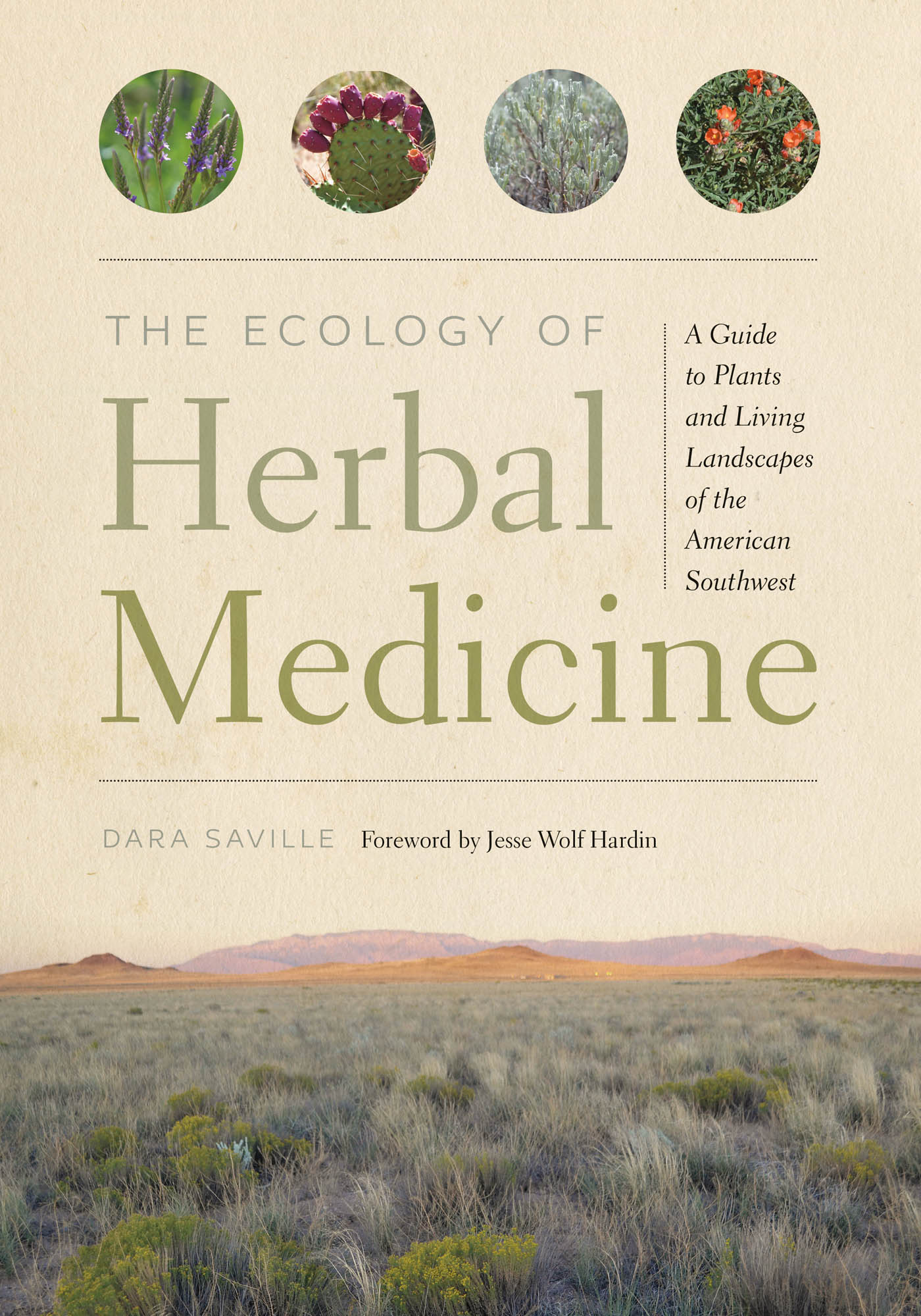THE ECOLOGY OF HERBAL MEDICINE

THE ECOLOGY OF
Herbal
Medicine
A Guide to Plants and Living Landscapes
of the American Southwest
DARA SAVILLE

2021 by the University of New Mexico Press
All rights reserved. Published 2021
Printed in the United States of America
ISBN 978-0-8263-6217-9 (paper)
ISBN 978-0-8263-6218-6 (e-book)
Library of Congress Cataloging-in-Publication data is on file
with the Library of Congress
COVER PHOTOGRAPHS BY the author
DESIGNED BY Mindy Basinger Hill
COMPOSED IN Parkinson Electra Pro and Copihue
MAPS BY Mindy Basinger Hill based on references created by Akashia Allen
DEDICATED TO Jerry Lee Williams,
THE CATALYST FOR MY DEEPLY ROOTED LOVE
OF SOUTHWESTERN LANDSCAPES

Contents
Jesse Wolf Hardin

Foreword
Like people everywhere, herbalists live and practice in a time of planetary stress, at the edge of intense challenges, at the crux of possibilities informed by the land, by the plants themselvesand by books such as this one that remind us to go out and listen, suggesting ways to look and perceive and providing encouragements to feel. Herein is a combination southwestern herbal, manual for conservation and restorative action, and song of love. It inspires us to learn the medicines of many of this regions signature healing plants while acting as agents of healing ourselves. It brings to our attention the immense joys of nature, connection, and service in the face of all that might be arrayed against us.
THE SITUATION
Humankind has forever depended upon the living land for its own existence and sustenance, and paid a high price for disrupting or overtaxing the ecosystems we have always relied upon. We created mythologies and religions to honor inspirited nature and taboos to prevent its despoilment. But as human civilizations and technologies have advanced, so too have the existential affronts that these make possiblemortal threats not only to ourselves, our food crops, and the soil they grow from but to all life forms. Exponentially increasing human population and development, induced climate change, toxic insecticides and herbicides, the destruction of natural habitat, the introduction of invasive species, and genetic manipulation are just a few of the compounding means for this self-destructive coursemade possible first and foremost by a shifting of cultural values and focus, and a dangerous and disorienting estrangement.
Both effective herbal healing and our species ultimate survival depend upon a literal and symbolic return to the roots, a cultural reset, and a deep personal refamiliarization with the plants and our purpose, with whole ecosystems as well as those specific herbs we grow and gather. A substantive and vital belonging. Strangers no more.
THE PRACTITIONER
Herbalism is literally natural healing, predicated upon the energetics, patterns, and effects of medicinal plants. It is informed and equipped by the natural world and by natural processes, and obviously cannot be practiced without either the herbs themselves or the ground they sprout from. By virtue of their practice, the herbalist sees the connection between conserving or propagating herbs and the protecting and nurturing of the land, between the healing of the human body and the healing of the earth. While we might deny the fact or choose less controversial/triggering terminology to describe it, there can be no meaningful and lasting medicinal plant tradition apart from what we here call ecological herbalism: botanical treatments that both contribute to and depend upon a recovering world.
As herbalists, we need to know about human constitutions and conditions, constituents and actions, and different kinds of preparations, from tinctures and teas to decoctions and topical creamseven the rudiments of psychology and intakes, and practicalities like business and taxes. But as always, one of the things we need most is an accurate, comprehensive understanding of those herbs and trees that we work with.
THE PLANTS
My home is a remote and utterly inconvenient wilderness paradise in the San Francisco Mountains in the Gila bioregion of southwestern New Mexico, seven river crossings from pavement and hundreds of miles from opportunities for incomes and social pleasures. What makes this river-laced canyon a paradise in my estimation is its tribe of green beings and uncompromised creatures, feeding and frolicking, trying to avoid predation and deal with climatic changes in their instinctual, relational ways, unimpaired by civilized aims and controls. I arrived seeking sanctuary for my aberrational self, soon finding a biological sanctuary that I was in place to createlearning how to study, commit to, pledge to, and guard it, helping to restore the health and vitality of what is uncontestedly a rare and precious riparian treasure. A decade of livestock exclusion, removal of invasives, and the replanting of native species resulted in a vibrant willow, cottonwood, and alder forest along the river named after Saint Francis, which then became evidence in a federal court case in support of a thirty-mile-long protective riparian restoration zone that now protects far more than our private property inholding.
Study and observation of the ecosystem from season to season was essential to the successful establishment of the Anima Botanical Sanctuary, finding out what helps or hurts the various natural components and their patterns of interaction. This requires knowing what plants and animals are native, which species are introduced, which species resided in a place prior to human presence or our personal arrival. As herbalists, it also means learning which plants have medicinal benefits for people, their properties, uses, and contraindications. And in all cases, it means figuring out what we can do to contribute to their health in turn.
Fundamental to this book are its excellent plant profiles, describing their places and purposes in their environs, as well as their places and purposes in the herbalists apothecary. In the books second part are concise, detailed portraits of some of the most emblematic and most medically significant southwestern species, from angelica to ocotillo and yarrow. While it draws from author Dara Savilles intimate familiarity with the three primary landscapes of her adopted region, her modeling, precepts, and insights apply to any and all bioregions and ecosystems, regardless of where one lives on this planet. By understanding how native species thrive and interacttheir needs, advantages, challenges, and vulnerabilitiesin one environment, we can more easily recognize such patterns and dynamics in other areas and other different conditions.
THE WRITER
Plants and land speak to us, though not in words but through their beings, examples, and responses to what they interact with. It is thus fortunate that throughout recorded time, there have been people insightful and comprehendible enough to speak for them, as rational agents, determined champions, and wild celebrants intoxicated with their presence, energy, healing effects, and breath-stopping beauty.


